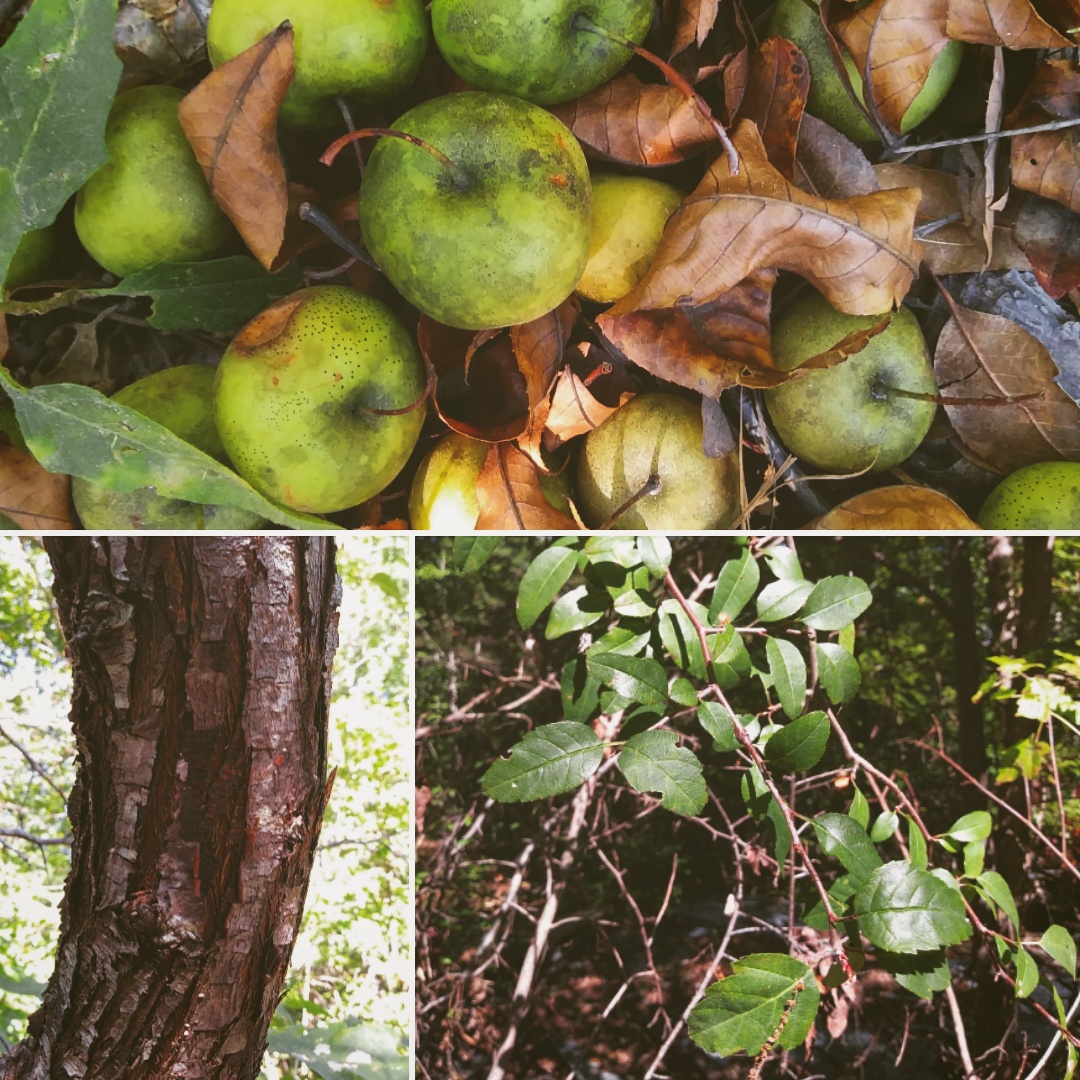Today’s plant for #WildEdibleWednesdsay is Malus angustifolia, or the Southern Crabapple. Reasonably common in low altitude areas (you won’t find it in the Smokies) from Virginia to Texas, it is the South’s only native apple. For all the talk of “American as apple pie,” regular eating apples are actually native to central Asia.
It is a small, shrubby tree, rarely reaching more than 30’ high. It has unruly, stiff branches with small thorny nubs at the ends of the twigs, which make it an absolute nightmare to try and walk through when it grows in low thickets. More than one unaware hunter has been poked in the eye by a crabapple twig. The leaves are 1”-2” long with fine teeth, oblong when small, and growing modest lobes when mature. The bark is silvery-gray, smooth in small trees and cracking into deep fissures when they grow more than a few inches in diameter. In the spring, the tree is covered in beautiful, scented pink flowers that open to pure white.
The wood is extremely hard and pleasantly fragrant. It is prime firewood, burning hot and long into excellent cooking coals, and giving off a sweet, apple-scented smoke. Apple wood is great for smoking meats, especially pork. It is also useful for tool and axe handles due to its durability, although it is devilishly difficult to carve.
For survival purposes, it’s the fruit you’re after. Like any other apple, they are high in carbohydrates, fiber, and vitamin C. They are yellow-green, an inch or so in diameter, and very hard. Before all kids everywhere became glued to iPad screens, they had crabapple wars. Speaking from experience, they’re enough to raise a pretty good welt when thrown as hard as possible.
Although they look like miniature apples, they don’t taste like them. In fact, they’re pretty vile. Even when ripe, they’re sour enough to be bitter. Imagine a Granny Smith apple magnified fivefold. Despite their less-than-ideal flavor, they do bear in abundance. Each tree bears heavily, and they’re almost never found alone, usually growing in thickets or small groves. For survival purposes, their use is twofold: One is as a direct food source, because although they might not taste good, they are nutritious. The other is as an attractant for wildlife. Deer, turkey, squirrels, bears, and almost everything else all eat crabapples. Staking out a crabapple grove from a distance and waiting to see what shows up can be a great way to hunt while saving energy.
Crabapple’s culinary uses are limited by their bitterness, but one thing they are good for is making a superb jelly. That’s what the ones in the photo are destined for. I gathered about three gallons of them off the ground, and when combined with an equal amount of sugar, they should turn out great!
- Alex

